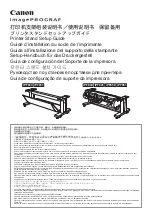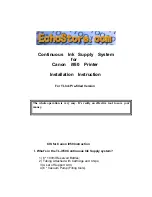
8
Sensors for your success
www.wenglor.com
Sensors for your success
www.wenglor.com
EN
Output Stage Selection Indicator
Output stage
LED at minus key
LED at plus key
NPN
on
off
PNP
off
on
Push-Pull
on
on
Table 2
Checking the Momentary Setting
• Activate the output stage setup mode (see “Activating the Output Stage Setup Mode” on page 7)
è
The momentary setting is indicated by the LEDs at the keys in accordance with table 1
• Activating the PNP Mode
Activating the NPN Mode
• Press the plus key
• Press the minus key
• Release the plus key
• Release the minus key
è
The LED at the plus key lights up
è
The LED at the plus key is off
è
The LED at the minus key is off
è
The LED at the minus key lights up
è
The PNP mode is activated
è
The NPN mode is activated
Activating the Push-Pull Mode
• Simultaneously press the plus
and minus
keys
• Simultaneously release the plus
and minus
keys
è
The LED at the plus key lights up
è
The LED at the minus key lights up
è
The Push-Pull mode is activated
Exiting the Setup Mode
• Set the rotary selector switch
Ý
to RUN
8.2. Setting the Switching Threshold with the Teach-In Function
With the help of integrated Teach-In technology, the Sensor automatically calculates appropriate settings based
upon currently acquired values and saves them to memory after the corresponding key has been activated,
or after an external control signal has been received.
Two-Point Teach-In
The marking to be recognized is first taught into the Sensor in two steps, and the background is taught in subse-
quently. The Sensor then automatically calculates the ideal switching threshold based upon these two values.
The brightness relationship of the two intensities is irrelevant as far as switching characteristics are concerned.
Sensor output A is activated when the Sensor recognizes the intensity value which was taught in first. Sensor
output A is deactivated when the Sensor recognizes the intensity value which was taught in second.







































